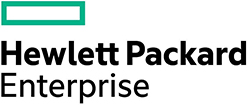Insights: Cloud
A clearer view of cloud
8 January 2025
It has been more than a decade since the UK government introduced a bold cloud first policy, directing public sector organisations to consider public cloud before other alternatives. The aim was, in the NHS, to support transformation and make its technology estate “agile, cost-effective, and environmentally sustainable”.
Since then, migration to cloud by NHS organisations has been slow and, often, conservative. Research by Digital Health Intelligence for 2022-24 identified 82 NHS trusts in England using cloud, with an average annual spend of £2,195,926. More than half of this expenditure (60%) went on email; investment in areas such as cloud data storage (13%) and cloud big data analytics databases (5%) lagged far behind. While the potential of cloud is enormous, the reality can be frustrating, with barriers to adoption – such as legacy technology and perceived security risks – remaining stubbornly in place.
And yet, the answer is not simply to attack the barriers with renewed gusto. The digital experts who contributed to this Insights report, suggest that a more nuanced approach is called for. Enthusiasm for cloud is now tempered with pragmaticism. Cloud isn’t an easy option, and it can be very expensive. Some experts doubt whether it is ‘greener’ or more secure.
Part of the appeal of cloud was the promise of endless abundance, but it turns out that there are limits to the supply. Nor is cloud always an affordable match for data-heavy AI innovations in healthcare. Indeed, the government’s boost for capital funding may drive investment back to on-premises infrastructure.
Public cloud has been brought down to earth – an important option, existing alongside on-premises, rather than floating far above it in effortless superiority.

Part 1
Consultant renal physician James Ritchie, chief clinical information officer at Greater Manchester Integrated Care Board (ICB), suggests that cloud’s central appeal doesn’t make sense in the acute hospital sector.
“The core argument of cloud is flexibility and scalability – and I do not see that we have a problem with that. Hospitals do not have Black Friday or Cyber Monday where we need to 10X our infrastructure overnight. With cloud you pay for the opportunity to have scalability – and you’re never going to use that,” he adds.
In Greater Manchester the ICB has achieved full migration to a private Microsoft cloud for the shared care record, but the acute providers are all still on-premises, says Ritchie. Whether that changes will depend on the direction of travel with their core EPR and the “convergence narrative” across systems, where cloud would be a help, he adds.
Cloud has been historically ramped up as a big saviour, when it is just using something at scale. In the end, it is a load of servers in a room somewhere.
Lee Rickles
Chief information officer Lee Rickles works at Humber Teaching Hospitals NHS Foundation Trust, where only the domain controllers have yet to move across to cloud. But getting to this point has been a decade-long “marathon” – and he is far from starry-eyed about cloud.
“To some degree it is immaterial whether you use cloud or on-premise,” says Rickles, the trust’s director and deputy senior information owner and a member of Digital Health’s ICS Council. “[Cloud] has been historically ramped up as a big saviour when realistically it is just a change – it’s using something at scale.
“It’s your Model T Ford production against your craftsmen in a workshop. In the end, it is still a load of servers in a room somewhere.”
For Russell Macdonald, chief technologist at Hewlett Packard Enterprise (HPE), the “hype” around public cloud was always a distraction from the “difficult questions” that need to be asked to make technology work better for people. “It’s often not more sustainable, it’s often not cheaper, it’s often not better [than on-premises]. There’s lots of over-inflation of the benefits of cloud that are not balanced with the risk and challenges.”
Part 2
Macdonald is unimpressed by the claim that the big public cloud providers’ investment and expertise in security means they are the safest option for NHS organisations. “The multi-tenanted nature of cloud means nobody cares specifically about hospitals’ data because they’ve got thousands and millions of customers’ data on the same platform. They’re not thinking ‘we must do something to protect the NHS’s data more than anybody else’s,” he says.
A particular concern for Macdonald is the “creeping cloudification” of the country’s most sensitive data. “I’m very shocked that we are putting electronic patient records in the cloud. I don’t think that’s a responsible thing to do with health data,” he says.
On the other hand, Professor Kevin Moore, a consultant hepatologist at the Royal Free London NHS Foundation Trust, insists that the “main advantage” of cloud is its increased security. It frustrates him that security concerns are still a major barrier to cloud adoption. “There is certainly a perception that cloud is less secure. It is more secure. Imagine if Microsoft has a major data breach – it would destroy them,” Moore says.
Cloud adoption at the Royal Free is “very limited”, according to Moore. One consequence of the widespread unwarranted caution around cloud, he argues, is that referrals to liver specialists across the country remain stuck in the past. “We have a doctor on the phone all day just taking down referrals on paper – you couldn’t make it up.”
Ritchie dismisses the big cloud providers’ “magic story” about their enhanced security as so much “marketing fluff”. “I’m not a cloud naysayer on the grounds of security, but I wouldn’t say we should move to the cloud because we’ll be more secure.”
For Rickles, the idea that the cloud provider takes on the burden of security is plainly wrong. “You’ve still got to do your own security,” he says.
The hyper-scalers have very good cyber security for the most part. But there’s no such thing as 100% perfect security. You have to have due diligence.
Pritesh Mistry
Pritesh Mistry, fellow in digital technologies at The King’s Fund’s, says: “You can have a very secure on-prem server or you can have a very secure cloud-based server. It’s what’s in place to keep it secure [that matters].
“The hyper-scalers have very good cyber security for the most part. But there’s no such thing as 100% perfect security. You have to have due diligence in place irrespective of whether it is on cloud.”
Nor can NHS organisations afford to take their eye of the costs of cloud. ‘Pay for what you use’ can mean huge bills. “You need to be quite skilled to keep costs down,” says Moore. “It’s a bit like suddenly finding the heating is on full blast when it is not cold. You are running these servers at full pelt, when you need quite a skills set to run them in an effective way.”
Green concerns
The original proposition around cloud was that it would be “greener”, says Rickles. “At the moment that looks like it is not the case. It’s probably better than on-premise but still not brilliant.”
Mistry says the hyper-scale cloud providers are “very incentivised” to have low-energy, efficient systems because that’s how they “maximise their product”, but adds that it is difficult for NHS organisations to assess the green credentials of cloud providers or compare performance against on-premises alternatives.
Arguably, cloud can encourage over-consumption. “We are going to see growth in AI and that will increase cloud use significantly. There’s a real risk of burning through a lot more cloud than you would on-prem just because you can,” says Rickles.
Ritchie is sceptical about the “fantastic” environmental claims made for cloud. “I don’t buy the story that cloud is cleaner. It’s shifting the problem,” he says.
Rickles believes that cloud can save money, but adds that “what you can’t do is lift what you’ve got in your existing infrastructure and expect savings”.
“When you try and consume AI in the [public] cloud it typically runs on the largest instance types and so becomes very expensive quite quickly”, points out Macdonald. Experimenting in the cloud is one thing, but when it comes to using AI with real, private and sensitive data at scale, “it’s a lot more cost effective to do that on-premises with a private cloud AI platform,” he says.
Mistry says that the high cost of running AI data sets in the cloud, coupled with capacity issues, is prompting some NHS organisations to invest in more on-premises computes. “A lot of sectors want to use cloud capacity, not just the NHS. It gets competitive,” he adds.
While the perception of limitless abundance was one of cloud’s great attractions, “it is capped – there is a limit,” says Mistry. “It takes time to develop new data centres and tool them up. So, where cloud should be easily scalable, it is not necessarily true.”
The most recent spending review’s boost for capital funding in the NHS has also made on-premises technology look more attractive. “We’ve got more capital around at the moment, and really you need revenue when you are buying cloud,” says Rickles.
Part 3
“Cloud can be a really capable solution but only when you have a need for it [and know] the outcome you are trying to achieve,” says Rickles. He emphasises that the starting point in any conversation about a technology solution should always be the patient.
Instead of aiming to shift everything to cloud, Ritchie sees its value in filling “gaps in functionality”. He would like someone to sit down and work out the use cases that work best in cloud and those which are better suited to on-premises. “But the idea that we’re just going to copy and paste our data centres into the cloud and that’s a good thing? It’s ‘new-ism’ rather than benefit,” he adds.
Consciously hybrid means we’re going to use cloud for what it is good at, but we’re also going to place the right workloads in the right place for the right reasons.
Russell Macdonald
For Macdonald and HPE, on-premises technology is not a problem to be overcome but part of a complex technology landscape that needs to be connected to deliver the best outcomes. “I would argue that consciously hybrid means we’re going to use cloud for what it is good at, but we’re also going to place the right workloads in the right place for the right reasons. And we’re going to redesign our organisations around our critical data.”
He says some organisations have spent millions migrating all their data to cloud in the (uncertain) hope of unlocking future benefits through “data mining”.
“Our approach would be ‘leave the data where it is – we’ve got the tools that can connect you to the data,'” Macdonald says.
HPE’s “consciously hybrid” approach has “definitely landed in the public sector”, he adds. “It’s changed the conversation we have with our customers. Rather than being transactional – ‘I want to want to refresh my hardware’ or ‘I want to decommission my hardware so I’m moving to cloud’ – we’re having much more strategic, broader business focused conversations about how we join stuff up.”
Cloud may have lost its “flavour of the month” status to AI but its future – with quantum cloud on the horizon potentially opening new capabilities – is still exciting, suggests Mistry.
Other interesting potential developments include a shift towards cloud native processing and the development of infrastructure that will allow people to access health records that encompass self-care and information from wearable devices as well as medical information. “[That] probably needs to be held in a cloud space,” says Mistry.
He concludes: “Cloud is one of those things that is hidden but it is very important for enabling other technologies, so we do need to have good ideas and a good vision for how it enables the future.”
A Digital Health Intelligence Insights report in association with Hewlett Packard Enterprise
